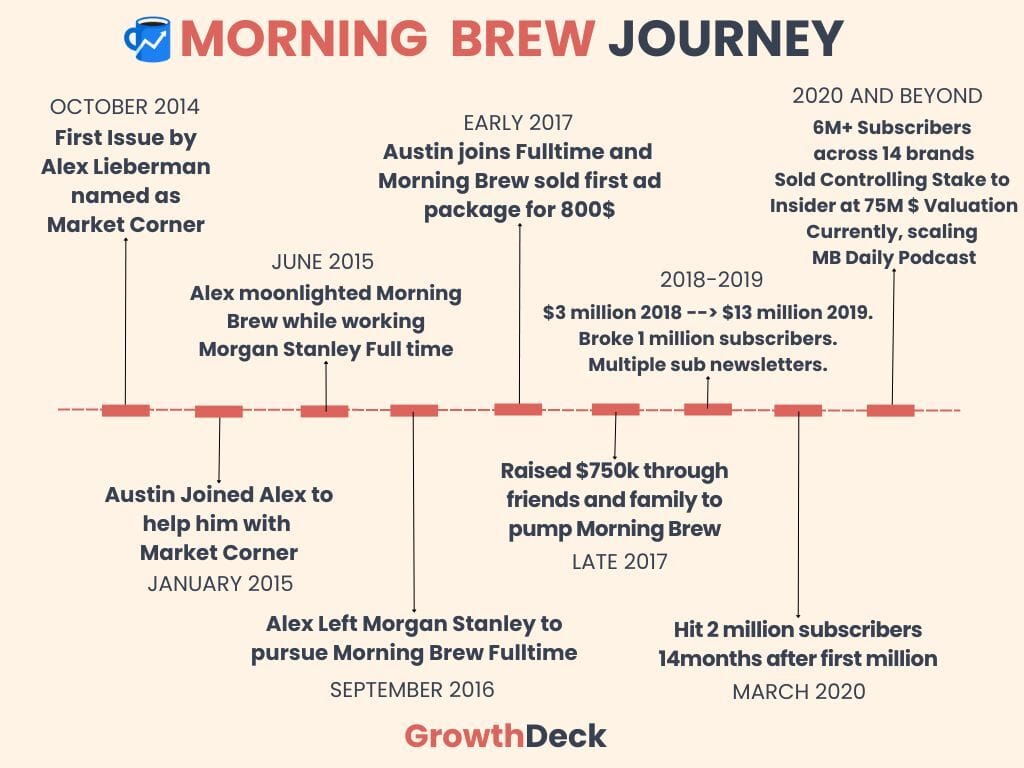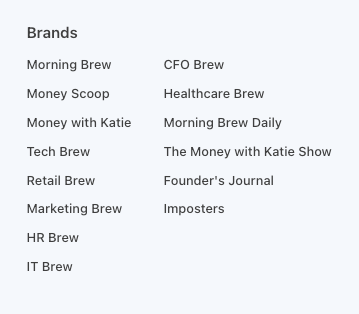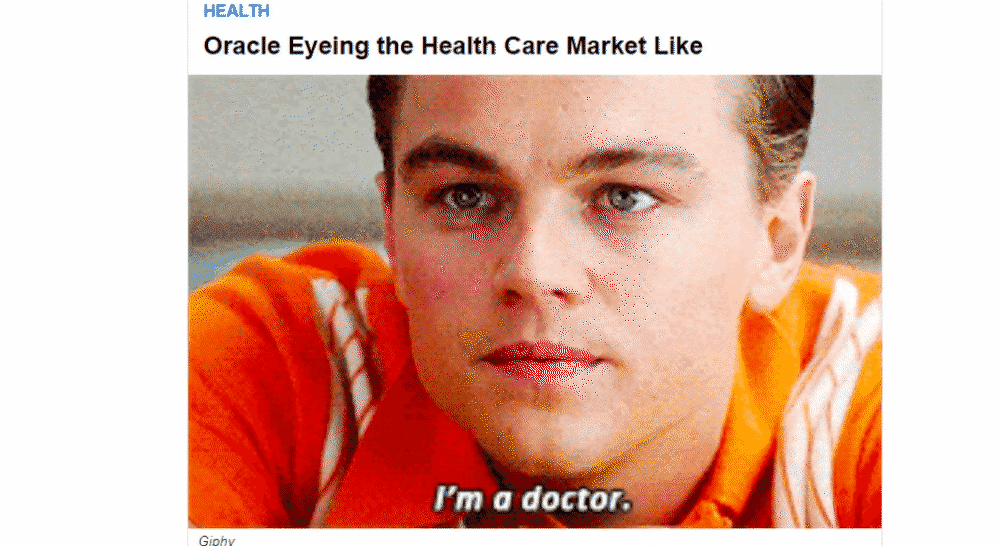Welcome to the 6th edition of GrowthDeck! If you enjoy reading deep dives like this, please share it with your friends or colleagues who would appreciate it. Now, let's dive in!
In the digital media world, success can be daunting, but Morning Brew, a witty and engaging daily business newsletter, has triumphed. With around 6 million total readers, it's one of the world's largest newsletters. Today, in this article, we'll explore the strategies that has helped Morning Brew. And how you as a founder can learn and implement similar strategies to grow your business.
Alex Lieberman, a senior finance major at the University of Michigan, recognized the lack of engaging business news sources and decided to create his own. He launched "Market Corner", a business roundup that soon grew in popularity, expanding from 45 to a thousand readers. He invited another student, Austin Rief, to become a co-founder, and they maintained the newsletter part-time for two years with the support of other college students, finally rebranding it as "Morning Brew".
Despite their studies and other obligations, they devoted themselves to the newsletter's expansion. Alex left his position at Morgan Stanley in 2016 to devote full-time attention to Morning Brew, and Austin followed suit after graduating in 2017. They achieved an incredible firm valuation of $75 million when Insider bought a controlling stake in Morning Brew in October 2020, an impressive success story emerging from a student project.

Alex mentions in one of his videos that growing Morning Brew was actually only 3 simple steps.
1)Creating the Best in Class Content
2)Make Content Reach Right Audience
3)Monetize Audience Via Paid Ads
Although looks very simple on paper, but each of these steps were very hard and required iterating through multiple things to ace it. Let’s take a look at some details of what things worked best for them.
Morning Brew’s Growth Drivers
☕️ 1- Knowing the Audience
This is a part of creating Best In Class content. To actually do that, you need to figure out the right audience.
For Morning Brew, it all started with a straightforward academic business assignment. Lieberman saw that his finance co-students struggled to keep up with business news. He quickly discovered that simply reading The Wall Street Journal did not benefit. As a result, Lieberman decided to create an easy-to-read newsletter as a PDF file. It intended to be content-rich but not as text-heavy as The Wall.
In terms of branding and positioning, Morning Brew went through three primary stages:
The Market Corner is the first stage. Morning Brew, formerly known as The Market Corner, primarily targeted finance students, giving them with important news in a more user-friendly format than traditional sources such as The Wall Street Journal. The name and emphasis were both investment-oriented.

Stage two: Changing the name to Morning Brew and broadening the scope of business news. After rebranding as Morning Brew, the platform began to attract a broader audience interested in business topics other than finance. Technology was introduced, and their homepage tagline reflected this larger approach: "The latest news from Wall St. to Silicon Valley."
Transition to a broader media brand in the third stage: Morning Brew's webpage currently implies a future push into mainstream news from numerous angles. Their principal newsletter promises a daily email that will keep readers informed and entertained on a variety of themes. While they still serve their initial finance-focused audience, they now cover news from practically every field. They have 14 different sub-brands built under them. Here is a picture from their website:

At each of these stages, they have focused on creating the best content. Morning Brew focuses on creating the best content first and then solving other problems later. Have a look at a tweet by Austin here:
The Brew team tailors the newsletter content to a specific group and delivers all content in a lively, conversational tone. Morning Brew, unlike other newsletters, incorporates interactive components and visually engaging information. To keep the emails engaging and interesting, they employ graphics for each topic and funny gifs.

📤 2- Acing the Initial Distribution
Phase 1: Initial Challenges and Creative Solutions
In 2014, Austin and Alex set out to turn a PDF attachment with only 250 readers into a successful media business. With no marketing budget, they got creative. They spent weeks approaching the University of Michigan professors to speak in their economics/accounting/finance 101 classes to pitch to the students. They hoped that pitching to 500 students would lead to easy sign-ups, but their initial attempts didn't quite catch the students' interest.
Phase 2: Hands-On Approach for Conversion Improvement
During their pitch, they were limited to the first 5 minutes of class, which meant that students were already preoccupied and not fully interested. They developed a creative method to increase sign-up rates: gathering email addresses on paper. This simple but effective strategy resulted in a tremendous boost in conversion rates, which soared from less than 10% to more than 75%. They personally helped people through the process of providing their email addresses to ensure active engagement, even going out of their way to hand sign up pupils outside the lecture hall. Their hands-on approach was crucial in successfully growing their subscriber base.
Phase 3: Expanding the Ambassador Program
Their hands-on approach worked wonders, resulting in thousands of daily readers for Morning Brew. Based on their success, they decided to broaden their reach and influence by introducing the "Morning Brew ambassador program" on additional college campuses.
Ambassadors were tasked with presenting their students and collecting email addresses by handing around a piece of paper for sign-ups as part of this program. They were able to sustain and improve their subscriber growth as a result of these measures. Austin mentions the story about it in the thread below.
This helped them go from 10k to 100k subscribers. Scaling beyond that was hard through this method so they went all in on developing a proper referral system which was developed by Tyler Denk who is currently running beehiiv (A newsletter platform).
Here is a picture of their growth journey:

🚀 3- Having a Reliable Referral Flywheel
Austin mentioned recently around 20% of Morning Brew’s sign-ups still come from referrals.
Let’s go into a bit of detail about the referral strategy used by Morning Brew. The journey actually starts as Tyler mentions in his blog through product.
When your product is good enough that people instinctively refer others without any sort of incentive, that’s a strong indicator that you’re ready to build a referral program
Morning Brew has established a referral program based on milestones. They feature a piece at the bottom of every email called "share the brew" that brings users to the referral program hub. Here are their current milestones for rewards:

Readers were encouraged to distribute the brew in exchange for prizes/exclusive material. This part indicates how many referrals they had and how many they needed to obtain to claim the next incentive (in order to motivate them to act). They also made it extremely simple to distribute immediately through link, email, or social media.
They also upsell and send if someone has been reading their newsletters consistently. Here is my personal mail screenshot from back in 2021.

This component was critical in driving their growth flywheel and is often regarded as their most known source of success. Here is a tweet by Austin where he talks about a new aspect of referral flywheel.
If you want to find out about the entire system in detail here is the link.
💰4- Paid Acquisition
For any newsletter to blow past a few thousand subscribers in a short time, they need other sources of user acquisition like paid acquisition.
Phase 1: Cross-Promotion and Quality Readers
They recognized that the easiest approach to broaden their reach was to be marketed on the same medium in which they were already functioning. This meant cross-promotion with other newsletters for newsletters. They observed that by putting advertising in other newsletters, the readers they got were more engaged (more than 2x) than those through Facebook or referrals.
This discovery prompted them to purchase advertisements in numerous emails, capitalizing on the emerging newsletter monetization market in 2018. Many newsletters were underpricing their advertising at the time, allowing Morning Brew to obtain inventory for 50-75% less than what was charged a year later. This strategy worked well for their bootstrapped business, resulting in increased readership quality.
Phase 2: Early Adopters of New Ad Products
They discovered that Instagram was expanding its Instagram Story ads. They created their first Instagram Story commercial, embracing their idea of being the first to test out new platforms. They released their first-ever IG Story commercial by combining the power of humor from their popular Instagram post with the IG Story ad style.
Subscribers poured in at an amazing rate, resulting in an extraordinary performance. They hit their daily ad expenditure cap of $10,000 by midday and attracted subscribers for only 10 cents each. Despite the fact that the peak numbers lasted only a week, this breakthrough transformed Morning Brew's growth trajectory forever.

Furthermore, influencer marketing on YouTube proven to be a profitable paid strategy for Morning Brew. Its effectiveness was greatly enhanced by targeting the correct audience or audience match.
Basically, experimentation is super important. What may seem like a terrible idea initially can lead to remarkable results. Start small, test various approaches, and double down on what works.
📊 5- Evolving from Intuitive to Data-Driven Growth
As Morning Brew expanded, they switched from intuitive growth (based on the founders' preferences) to data-driven growth. Analyzing audience engagement data assisted them in determining which content connected with their users, guiding future content creation.
Morning Brew is proactively organizing its data into two categories:
Audience Engagement: Understanding what content their audience engages with and desires, to align their content creation strategy accordingly.
Audience Health: Learning more about their audience's behavior, such as frequency of opening emails, reasons for unsubscribing, and methods to increase subscriber LTV. This data-driven approach empowers them to make informed decisions to enhance their offering and overall growth.
To give an example, they use ABCD testing for headlines. Their subject lines are intentionally concise, usually less than five words, and aimed to peak readers' interest. Rather than wasting time discussing topic lines, the Brew team takes proposals from one or two writers and implements them.
The main work is done during the A/B testing phase. Before releasing the message to their entire 3 million readership, they segregate the audience. They send the newsletter to each sector with a distinct subject line.
They analyze the data after the blast to determine which subject line generated the highest open rate. The best-performing subject line is then used for the newsletter delivered to the remaining subscribers, ensuring maximum engagement.
📈6- Helping Advertisers Write the Best Copy
Morning Brew's quality has already been acknowledged, as has how they develop amazing content to drive word-of-mouth. They keep the engagement high with great copywriting. Now similar to their content they help their advertisers write a great copy.
Morning Brew designs the ad in the same warm and entertaining conversational manner that they employ in their newsletter material. This allows them to connect the ad language with the newsletter content, allowing them to be effective without detracting from the overall vibe of the newsletter. Here is an example from a recent issue:

If you are interested in listening more about their journey. Consider listening to this podcast.
Top Lessons for Newsletter Operators
Know your audience: Understand your target audience's needs and preferences to create best-in-class content that resonates with them.
Focus on quality: Prioritize delivering high-quality content first, and then tackle other growth challenges.
Experiment and iterate: Be open to trying new approaches and testing different strategies to discover what works best for your newsletter.
Ace initial distribution: Take a hands-on approach to convert early users into loyal subscribers by personally engaging and simplifying the signup process.
Build a reliable referral flywheel: Establish a referral program based on milestones and incentivize readers to share your newsletter with others.
Utilize paid acquisition strategically: Consider cross-promotion with other newsletters, early adoption of new ad products, and influencer marketing to boost subscriber growth.
Strive for data-driven growth: Analyze audience engagement data to make informed decisions on content creation and overall growth strategies.
That’s all for today. This edition took us about 29 hours of effort. If you think your friends or colleagues would like this, please share this link with them. Thanks for reading and don’t be shy to leave a comment if you have any. Also, please consider following us on Twitter (Keval Jagani, Meet Shukla) and sharing this blog post.